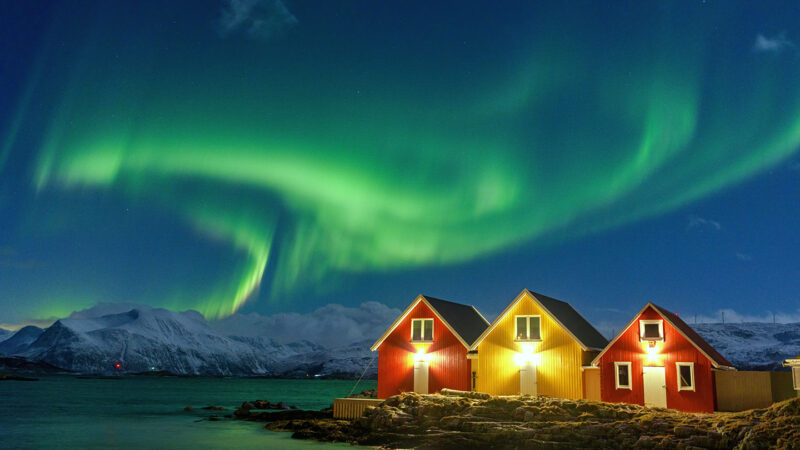
atmosphere: The envelope of gases surrounding Earth, another planet or a moon.
atom: The basic unit of a chemical element. Atoms are made up of a dense nucleus that contains positively charged protons and uncharged neutrons. The nucleus is orbited by a cloud of negatively charged electrons.
aurora: A light display in the sky caused when incoming energetic particles from the sun collide with gas molecules in a planet’s upper atmosphere. The best known of these is Earth’s aurora borealis, or northern lights. On some outer gas planets, like Jupiter and Saturn, the combination of a fast rate of rotation and strong magnetic field leads to high electrical currents in the upper atmosphere, above the planets’ poles. This, too, can cause auroral “light” shows in their upper atmosphere.
aurora borealis: Also known as the northern lights, this light display in the Northern Hemisphere sky is caused when incoming energetic particles from the sun collide with gas molecules in Earth’s upper atmosphere.
core: Something — usually round-shaped — in the center of an object. (in geology) Earth’s innermost layer. Or, a long, tube-like sample drilled down into ice, soil or rock. Cores allow scientists to examine layers of sediment, dissolved chemicals, rock and fossils to see how the environment at one location changed through hundreds to thousands of years or more.
cosmic rays: Very high-energy particles, mostly protons, that bombard Earth from all directions. These particles originate outside our solar system. They are equivalent to the nucleus of an atom. They travel through space at high rates of speed (often close to the speed of light).
drag: A slowing force exerted by air or other fluid surrounding a moving object. It involves friction. But unlike simple friction, it increases with an object’s speed.
excite: (in chemistry and physics) To transfer energy to one or more outer electrons in an atom. They remain in this higher energy state until they shed the extra energy through the emission of some type of radiation, such as light.
iron: A metallic element that is common within minerals in Earth’s crust and in its hot core. This metal also is found in cosmic dust and in many meteorites.
Jupiter: (in astronomy) The solar system’s largest planet, it has the shortest day length (9 hours, 55 minutes). A gas giant, its low density indicates that this planet is composed mostly of the light elements hydrogen and helium. This planet also releases more heat than it receives from the sun as gravity compresses its mass (and slowly shrinks the planet).
magnetic field: An area of influence created by certain materials, called magnets, or by the movement of electric charges.
Mars: The fourth planet from the sun, just one planet out from Earth. Like Earth, it has seasons and moisture. But its diameter is only about half as big as Earth’s.
Mercury: (in astronomy and here the term is capitalized) The smallest planet in our solar system and the one whose orbit is closest to our sun. Named after a Roman god (Mercurius), one year on this planet lasts 88 Earth days, which is shorter than one of its own days: Each of those lasts 175.97 times as long as a day on Earth.
metal: Something that conducts electricity well, tends to be shiny (reflective) and is malleable (meaning it can be reshaped with heat and not too much force or pressure).
molten: A word describing something that is melted, such as the liquid rock that makes up lava.
oxygen: A gas that makes up about 21 percent of Earth’s atmosphere. All animals and many microorganisms need oxygen to fuel their growth (and metabolism).
particle: A minute amount of something.
planet: A large celestial object that orbits a star but unlike a star does not generate any visible light.
radius: (plural: radii) A straight line from the center to the circumference of a circle or sphere.
Saturn: The sixth planet out from the sun in our solar system. One of the two gas giants, this planet takes 10.6 hours to rotate (completing a day) and 29.5 Earth years to complete one orbit of the sun. It has at least 82 moons. But what most distinguishes this planet is the broad and flat plane of bright rings that orbit it.
solar wind: A flow of charged particles (including atomic nuclei) that have been ejected from the surface of the star, such as our sun. It can permeate the solar system. When emitted by a star other than the sun, this radiation is known as a stellar wind.
sun: The star at the center of Earth’s solar system. It is about 27,000 light-years from the center of the Milky Way galaxy. Also a term for any sunlike star.
